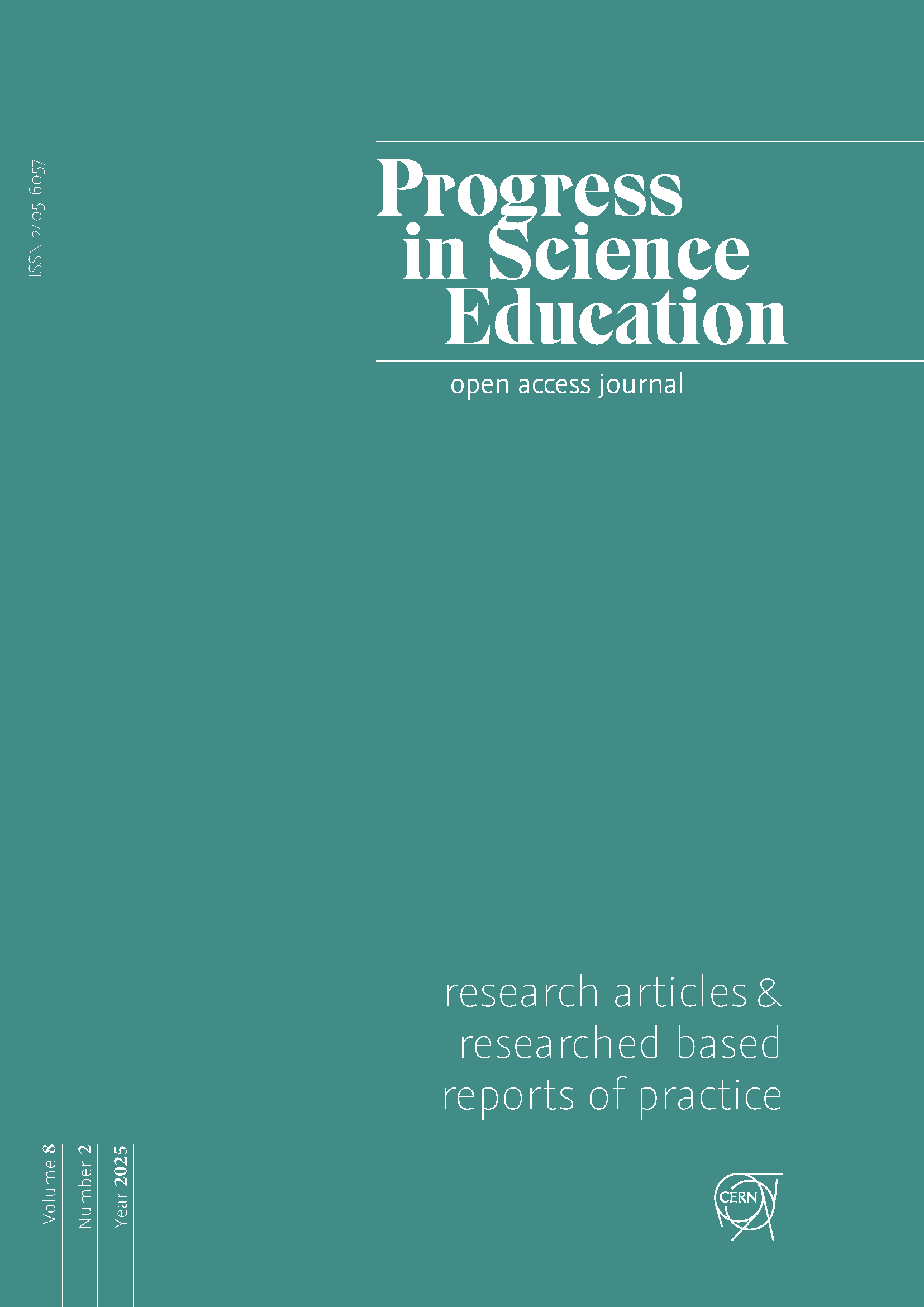Effects of out-of-school learning site visits on students
A systematic review of literature for STEM-subjects
DOI:
https://doi.org/10.25321/prise.2025.1563Abstract
Background: Over the last years, out-of-school learning sites have been established for the STEM-sector (Baar & Schönknecht, 2018) and have gained considerable importance (Kuske-Janßen et al., 2020) leading to current calls for strengthening of out-of-school learning opportunities (Anger et al., 2024). The data-based development of out-of-school learning opportunities can thus be considered as a current research task in the field (Beyer et al., 2020).
Objectives: For this contribution, a systematic review of literature was conducted to present empirical data. Additionally, the effects of the visit of an out-of-school STEM learning site on students were investigated and further research desiderata were derived.
Methods: In the course of the systematic review of literature, a multi-step procedure was followed. First, a literature search was carried out in the databases ‘Web of Science’ and ‘FIS Bildung’ using defined search terms. The publications were then selected in several rounds according to defined exclusion criteria. This was initially done by looking at the title, followed by a review of the abstract and finally a review of the full text. This left 28 publications that were analyzed in depth.
Results: It turned out that the visit of out-of-school learning sites mostly positively impacted students’ affective-motivational constructs and led to increased content knowledge even though this learning gain mostly was more lasting but usually lower or not different in the short term in school interventions. Especially in relation to affective-motivational constructs it remained unclear whether visiting an out-of-school learning site leads to more positive effects than lessons at school. Nevertheless, it was usually found that the visits of out-of-school learning sites showed more positive effects on students compared to school lessons or that no differences to school lessons were found. In particular, the effects of the out-of-school learning site visits depended on the type of integration into regular school lessons and were more positive than those lessons in terms of practical working methods.
Conclusion: Based on the publications analyzed, visits to out-of-school learning sites in the STEM field are less recommended for increasing students' content knowledge. In order to utilize the positive effects of such a visit on affective-motivational constructs, it is advisable to integrate the visit into regular lessons and to focus on practical working methods at the learning site. It also emerged that few publications investigate the potential of out-of-school learning sites to increase STEM-related career aspirations of students and that these publications have methodological weaknesses. This research gap should be closed in further research projects.
Downloads
Published
Issue
Section
License
Copyright (c) 2025 The Author/s

This work is licensed under a Creative Commons Attribution-NonCommercial-ShareAlike 4.0 International License.
Authors who publish with this journal agree to the following terms:
- Authors retain copyright and grant the journal right of first publication with the work simultaneously licensed under a Creative Commons Attribution License that allows others to share the work with an acknowledgement of the work's authorship and initial publication in this journal. The applicable licence is https://creativecommons.org/licenses/by-nc-sa/4.0/, which means
You are free to:
Share — copy and redistribute the material in any medium or format
Adapt — remix, transform, and build upon the material under the following terms:
Attribution: You must give appropriate credit, provide a link to the license, and indicate if changes were made. You may do so in any reasonable manner, but not in any way that suggests the licensor endorses you or your use.
NonCommercial: You may not use the material for commercial purposes.
ShareAlike: If you remix, transform, or build upon the material, you must distribute your contributions under the same license as the original.
Authors are able to enter into separate, additional contractual arrangements for the non-exclusive distribution of the journal's published version of the work (e.g., post it to an institutional repository or publish it in a book), with an acknowledgement of its initial publication in this journal.
Authors are permitted and encouraged to post their work online (e.g., in institutional repositories or on their website) prior to and during the submission process, as it can lead to productive exchanges, as well as earlier and greater citation of published work (see The Effect of Open Access).

